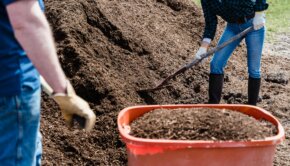Who’s saving the bees?

Research by Arena Flowers shows big increases in beehive populations over 50 years in South America, Asia, Africa, and Australia, but decreases in Europe and North America.
12 March 2020
The loss of bees would be detrimental to plant and insect ecosystems, as well as have crushing effects on certain food supplies around the world.
Bee colonies are known to be rapidly decreasing, with a worrying 13 bee species going extinct in the UK alone since 1900, and a further 35 being added to the threatened species list.
The decline in bee colonies became such a pertinent issue, that in 2015, Barack Obama, then president of the US, released the US’ first-ever national strategy to improve the health of honeybees and other pollinators.
Research carried out Arena Flowers has revealed which countries around the world have seen the largest increase in beehive populations from 2007 to 2017, thanks to their beekeeping efforts.
Not every country is listed in the research but of those who are, Uzbekistan tops the best performers with a 307% increase in beehives since 2007, with Mongolia (281%), New Caledonia (274%), and Serbia (218%) also seeing significant increases in numbers of beehives over that decade.
The data was collected from the Food and Agricultural Organisation (FAO) of the United Nations (UN) on the number of beehives in countries around the world from 1961 to 2017, to show which countries have the highest population of bees, according to the number of beehives, and how this has changed over 50 years.
Examining the available data from 1961 to 2017, Arena Flowers identified the best performing continents for growing beehive populations as Asia (296%), South America (210%), Africa (156%), and Australia (140%).
North America and Europe’s beehive populations have decreased by 43% and 11% respectively.
The countries which saw biggest decreases in beehive population across the decade of 2007-2017 were Italy (-54%), Palestine (-43%), and Egypt (-35%).
“It’s alarming to see how drastically life as we know it would change without the existence of bees. From the range of foods available, to the plants and greenery growing in the environments around us, our favourite spots which are currently rich in nature would look dramatically different.”, said John Hackett, managing director at Arena Flowers.
Hackett continued: “It’s great to see countries around the world such as Uzbekistan getting involved in programmes that are helping to facilitate the protection of bees.
“As a nation we need to make changes to prevent the decline of bees – even by making small practical changes such as using bee-friendly pesticides, planting more wildflowers in our gardens, and trying to mow our lawns less often.”
Bee welfare and creating gardens that look to impact their surrounding ecosystems in a positive way are huge trends for the garden retail sector for 2020.
It is an issue that is on the minds of a customer base that is increasingly aware of their impacts on the environment and is something that garden centre retailers can capitalise on with in-store incentives, captivating point-of-sales, and supplying products which meet these needs.
See the Arena Flowers website for information on the performance of 119 countries and more information on bees.



 Print
Print









Fans 0
Followers